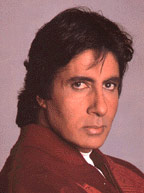

 |  |
 Ironically, it was these very same defence purchases that were to become the proverbial albatross around Rajivís neck. The big one was Bofors, the stink of which continues to this day, but it started with smaller scandals around Fairfax and the HDW submarine deal. Ironically, it was these very same defence purchases that were to become the proverbial albatross around Rajivís neck. The big one was Bofors, the stink of which continues to this day, but it started with smaller scandals around Fairfax and the HDW submarine deal.Fairfax controversy centred on the appointment by V.P. Singh, Rajivís finance minister, of an American detective agency, Fairfax, to investigate the illegal stacking of foreign exchange in overseas banks by Indians. A forged letter, which suggested that the investigations included Amitabh Bachchan, a close friend of the prime minister, surfaced from nowhere, and big industrialists, Nusli Wadia of Bombay Dyeing and Ambani of Reliance, were reported to be involved in the game on opposite sides. The Opposition as proof that Rajiv was trying to shield his friend Amitabh projected the transfer of V.P. Singh from Finance to Defence, which Rajiv claimed was because he needed somebody capable to handle Defence at the time because of the crisis with Pakistan. This was followed by the HDW submarine scandal. When India wanted to place a further order for two more submarines with the HDW shipyard in West Germany from whom it had bought four in 1981, and asked for some price discount, the shipyard declined saying it had to pay heavy 7 per cent commission on the sale anyway. V.P.Singh, who was defence minister, without speaking to Rajiv, ordered an enquiry. This was taken as an unfriendly act since Mrs. Gandhi herself was defence minister at the time of the award of the contract in 1981, and a Congress government was in power. There was criticism of Singhís conduct in the Cabinet meeting, and he soon resigned from the government. The Opposition and the Press declared this as proof of V.P.Singhís honesty and Rajivís attempts at a cover-up. The Mr. Clean label was shifted to Singh and Rajivís honeymoon was over. Bofors On 16 April 1987, a few days after Singhís resignation, the Bofors scandal broke. The allegations, which first appeared on Swedish Radio, were that the equivalent of sixty crores of Indian rupees were paid as bribes to Indian officials and Congress party members to secure the contract for the 410 howitzer guns to Bofors company of Sweden in face of stiff competition from a French gun. The allegations, which were taken up in a big way by the Indian Press, particularly the Indian Express, and later The Hindu, soon snowballed into a major attack on Rajiv himself with sections of the opposition parties charging that he and his family were the recipient of the money. What catapulted the crisis was that Rajiv gave no public denial of his and his familyís involvement. It also provided an opportunity to Giani Zail Singh, the President, to try and settle scores with Rajiv. Annoyed because Rajiv had been lax in observing the convention of regularly calling on the President to keep him informed of important developments, and also because he was not consulted about the Punjab and Mizo accords, and lured by the prospect of a second term, Zail Singh became the centre of a major conspiracy in mid-1987 to dismiss Rajiv from office. Opposition leaders and some Congress dissidents encouraged the President to dismiss Rajiv on charges of corruption or failing to fulfill the constitutional requirement of keeping the President informed. Zail Singh was almost persuaded but V.P. Singh, who was the alternative, declined to play the game. But Bofors and the stink of corruption would not go away, and resurfaced in 1989, the election year. The Joint Parliamentary Committee Report had given a more or less clean chit, but the Comptroller and Auditor-Generalís Report cast doubts on the procedure for selection of guns and raised other issues as well, the Opposition demanded Rajivís resignation. They followed it up with en masse resignation from the Lok Sabha. Rajiv went to his second general elections with the country in a mood very different from the one in his first round. V.P. Singhís single-minded crusade against corruption, which he had carried on unremittingly since his expulsion from the Congress in 1987, had touched a sensitive chord. Corruption at the lower levels of the bureaucracy was an issue of everyday concern for all citizens, rich or poor, and it was widely felt that high-level corruption created conditions of legitimacy for the lower level variety. V.P. Singh courted and won the support of a wide range of forces, which included Sarvodaya workers, trade unionists such as Datta Samant, the farmersí movement led by Sharad Joshi in Maharashtra, and some sections of intellectuals. Shah Bano case This case in which the Supreme Court granted maintenance to a Muslim woman divorced by her husband became controversial because orthodox Muslims opposed it on the grounds that it interfered with the Muslim personal law. Rajiv, coming under enormous pressure, from a powerful agitation and close advisers, agreed to introduce a bill to negate the judgement. Rajivís stand on the Shah Bano case had first cost him Muslim support and, once he changed his mind, Hindu support as well, since he was seen as appeasing Muslims. |
Copyright ©2000 indiansaga.info. All rights reserved.
By using this service, you accept that you won't copy or use the data given in this website for any commercial purpose.
The material on indiansaga.info is for informational & educational purpose only.
This site is best viewed at 800 X 600 picture resolution.